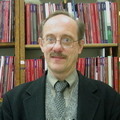Crowd-Curated or Crowd-Juried?
After I was recently asked to write a blog posting about Click! from my perspective, I spoke with some of my colleagues—Patrick Amsellem, Associate Curator of Photography, and Judy Kim, Curator of Exhibitions–about the exhibition, and we began to discuss the term “curated.” The three of us have all been curators of exhibitions in our careers, but we have also all been on juries for exhibitions, and we think that perhaps what the crowd was asked to do here was to jury the selection—that is, to rank the works that were submitted so that a selection could be made on the basis of that ranking. That is sometimes the first step toward curating an exhibition, but only the first step. Once an initial selection is made, the curator usually begins to refine the idea of the exhibition and to see how the ideas represented by the objects selected best work together, and how placing certain works side by side, or across the room from one another can have an impact on the way we perceive them, and thus help to advance the theme and the learning experience. Further “curating” is done by explaining in written form in the labels some of the ideas the installation conveys visually.
So if the crowd juried the images, how was it curated? And what was the idea curated? The theme of the photographs submitted was “The Changing Faces of Brooklyn,” but that is not the theme of the installation that is presented in our galleries. Although the changing faces of Brooklyn is an idea that underlies each of the works of art in the exhibition, the exhibition itself is about the notion of selection, and, specifically, selection by the crowd. Both visually, and in terms of its written didactics, the installation supports that primary idea, put forward—that is, curated—by Shelley Bernstein. And that is what makes it such an unusual and thought provoking exhibition. It seems to me that an exhibition that was only about the changing faces of Brooklyn in photography might be interesting, but an exhibition that is also about the nature of selection, and all the questions it raises about taste, background, interpretation—and a myriad of other issues—creates a richer discourse. In Click! the theme of the work and the selection and installation process complement and mutually reinforce one another, forming a compelling snapshot of who we are and how we chose.
I am interested to know what others think about this, and I will be taking questions on the subject this week.

Kevin Stayton was born in Ohio, and educated at the Ohio State University, and Yale University. He began work at the Brooklyn Museum in 1980 as an Assistant Curator of Decorative Arts. He became Curator of Decorative Arts in 1989, and Chief Curator in 2001. In addition to his position at the Brooklyn Museum, he has taught at the Bard Center for Studies in the Decorative Arts, Design and Culture; the Cooper-Hewitt/Parsons Graduate Program in the Decorative Arts; and Columbia University.
